Bathrooms
Transform your bathroom into a space that’s as stylish as it is functional. From showers and tubs to fixtures and finishes, Renuity offers expert...
Transform your bathroom into a space that’s as stylish as it is functional. From showers and tubs to fixtures and finishes, Renuity offers expert...
Soak away the day in a new bathtub and say goodbye to that dingy old tub you never use! Our one-day bath installs will have you enjoying bubble baths...
Step into a modern, spa-like shower with a custom remodel from Renuity—expertly installed, beautifully designed, and built to last.
Renuity's walk-in showers offer an open, streamlined bathing layout that improves maneuverability and reduces the need to step over a tall tub edge....
Renuity offers walk-in tubs that provide a stable bathing environment for people who value comfort and accessibility. These designs work well for...
Discover customizable KOHLER® LuxStone® showers crafted from crushed stone and engineered for timeless elegance, strength, and everyday comfort.
Upgrade your tub to a sleek, modern shower with Renuity—customized for your space, expertly installed, and built for everyday comfort.
Soak safely in a Kohler walk-in bath—designed for comfort, accessibility, and spa-like relaxation, all installed by the experts at Renuity.
Boost curb appeal and energy efficiency with high-quality replacement windows. Renuity installs durable, stylish options that are built to last.
Renuity installs custom awning windows that frame your outdoor scenery while enhancing natural light and insulation. With sleek designs, durable...
Renuity specializes in custom bay window installation and replacement, delivering timeless style, energy efficiency, and added interior space. Our...
Renuity installs custom bow windows that expand your view, brighten your space, and improve energy efficiency. With durable materials and expert...
Renuity installs high-quality casement windows that combine sleek design, easy operation, and energy efficiency. With expert installation and...
Renuity installs high-quality double-hung windows that combine traditional charm with advanced energy efficiency. With dual operable sashes,...
Renuity provides ENERGY STAR®-rated replacement windows that improve insulation, reduce drafts, and lower utility bills. With multi-pane glass,...
Fixed and architectural shape windows by Renuity create focal points that influence both curb appeal and interior character. These non-operable...
Renuity installs durable, energy-efficient garden windows that extend outward to create a mini greenhouse effect. Ideal for kitchens, they add...
Renuity installs custom hopper windows designed to fit compact areas while delivering superior ventilation, energy efficiency, and security. Perfect...
Designed for homes in storm-prone regions, these hurricane windows feature laminated impact glass and reinforced vinyl frames that hold strong...
Renuity’s impact windows are designed to perform in the toughest conditions—offering the same level of protection trusted in hurricane zones...
Renuity installs custom picture windows that frame your outdoor scenery while enhancing natural light and insulation. With sleek designs, durable...
Single hung windows offer a simple, durable design that works well in a wide range of homes. Many shoppers researching Renuity's single hung windows...
Renuity installs custom slider windows that frame your outdoor scenery while enhancing natural light and insulation. With sleek designs, durable...
Renuity installs premium vinyl windows built for durability, insulation, and low maintenance. Designed to resist warping, rotting, and fading, our...
Make a lasting first impression with expertly crafted entry, patio, and interior doors. Renuity installs doors that combine security, efficiency, and...
Renuity offers a wide selection of entry doors, including wood, fiberglass, and steel options. With expert installation and customizable designs, our...
Renuity offers a wide selection of patio doors, including elegant French doors and modern sliding glass designs. With expert installation and premium...
Renuity offers sliding doors that bring modern design, space efficiency, and energy performance to any home. Built from durable, low-maintenance...
Renuity's hurricane doors are built to keep wind, rain, and debris out, and to stay shut when pressure changes during a storm. Our choices balance...
Renuity offers impact doors designed to defend homes against high winds, heavy rain, and airborne debris without sacrificing beauty or comfort....
Renuity’s French doors are engineered to deliver lasting performance without sacrificing the timeless aesthetic that makes this style a favorite...
Renuity offers custom front, patio, and exterior doors tailored to your design preferences and functional needs. With premium materials and expert...
Bring new life to your kitchen with updates that balance beauty and practicality. From cabinets to countertops, Renuity makes it easy to refresh the...
Renuity specializes in kitchen cabinet refacing that delivers a brand-new look in just days. By replacing doors, drawer fronts, and finishes while...
Renuity provides professional cabinet refacing and installation services that transform your kitchen with minimal disruption. Our expert team ensures...
Upgrade your storage with custom closets designed to maximize space and match your style. Renuity creates smart, functional solutions for every room...
Renuity designs and installs custom closet organizer systems that make storage simple and stylish. With adjustable shelving, custom drawers, and...
Renuity designs kids’ closets that make staying organized simple and fun. With adjustable shelving, built-in bins, and durable finishes, our custom...
Renuity designs custom reach-in closet systems that make the most of every inch. With adjustable shelving, integrated hanging rods, and sleek...
Renuity creates custom walk-in closets that balance style and functionality. With adjustable shelving, custom cabinetry, and premium features, our...
Renuity creates custom wardrobe closets with cabinets, drawers, and shelving designed to maximize storage and elevate your bedroom’s style. With...
Protect and refresh your home surfaces with durable floor and garage coatings. Renuity delivers long-lasting performance with a sleek, modern finish.
Renuity specializes in polyurea garage floor coatings that are 20x stronger than epoxy, slip-resistant, and built to last. With fast installation and...
Renuity’s basement floor coatings combine strength, style, and moisture resistance for a space that’s built to last. With customizable designs...
Renuity’s patio and walkway coatings combine durability, safety, and style to keep your outdoor spaces looking fresh and functional. With...
Declutter and organize every corner of your home with customized storage systems. Renuity offers solutions that make your daily life easier and more...
Renuity designs and installs garage storage systems that keep your space organized, efficient, and clutter-free. From shelves and cabinets to...
Renuity designs custom home office systems that blend style, storage, and functionality. From built-in desks to tailored shelving, our solutions help...
Renuity creates custom laundry room storage systems that keep your space organized and efficient. From built-in cabinets to adjustable shelving and...
Renuity designs and installs custom media centers that keep your entertainment area organized and stylish. From built-in wall units to storage-rich...
Renuity designs custom mudroom storage systems that combine style and function. From built-in benches to adjustable shelving and cubbies, our...
Renuity creates custom reach-in pantry systems that keep your kitchen organized and functional. With adjustable shelving, pull-out drawers, and...
Upgrade your walk-in pantry with tailored designs that combine style, organization, and convenience.
Renuity offers custom Murphy beds that transform any room into a multi-functional space. From wall beds with desks or shelves to sleek cabinet...
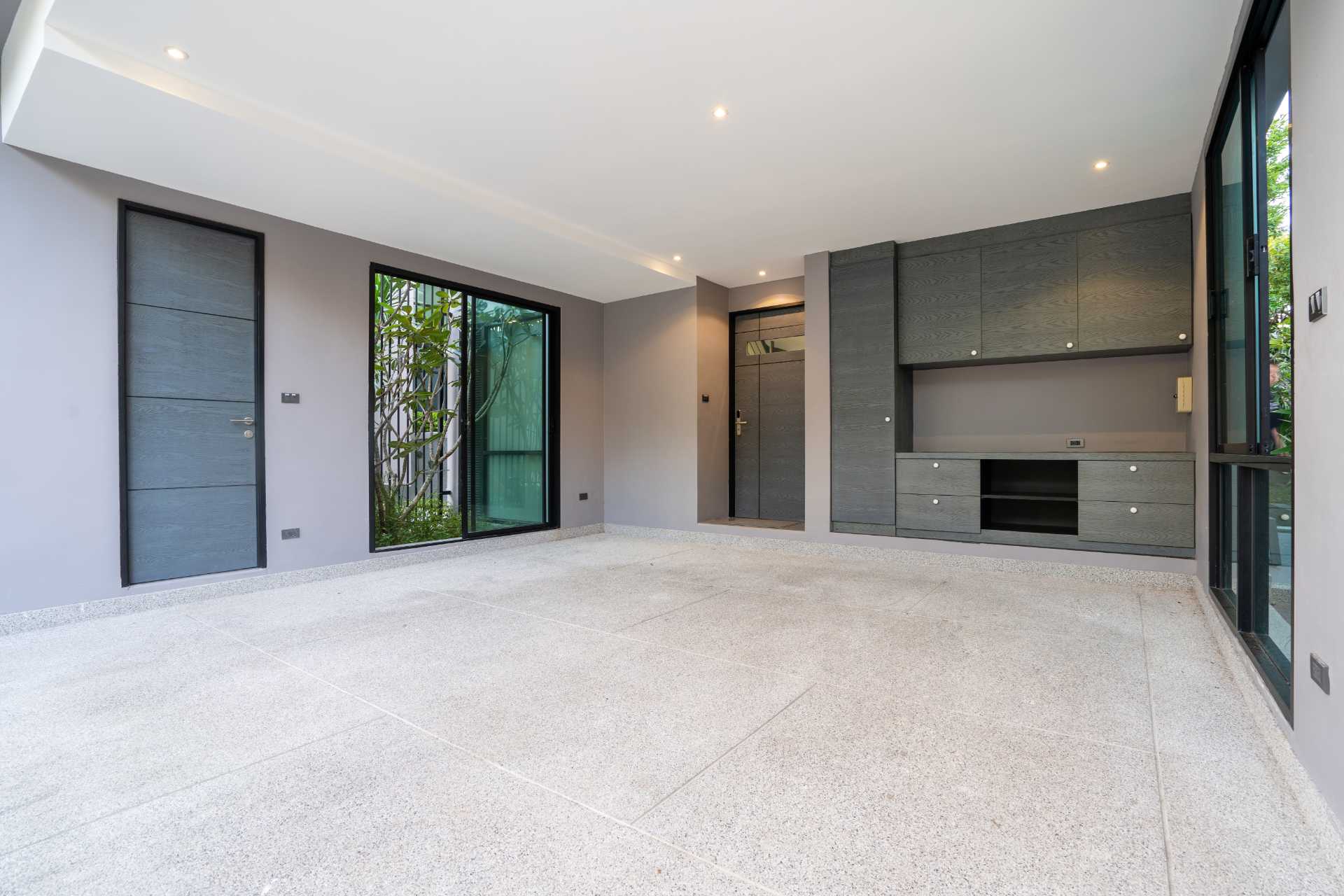
No Interest, No Payments for 12 months on Select Products
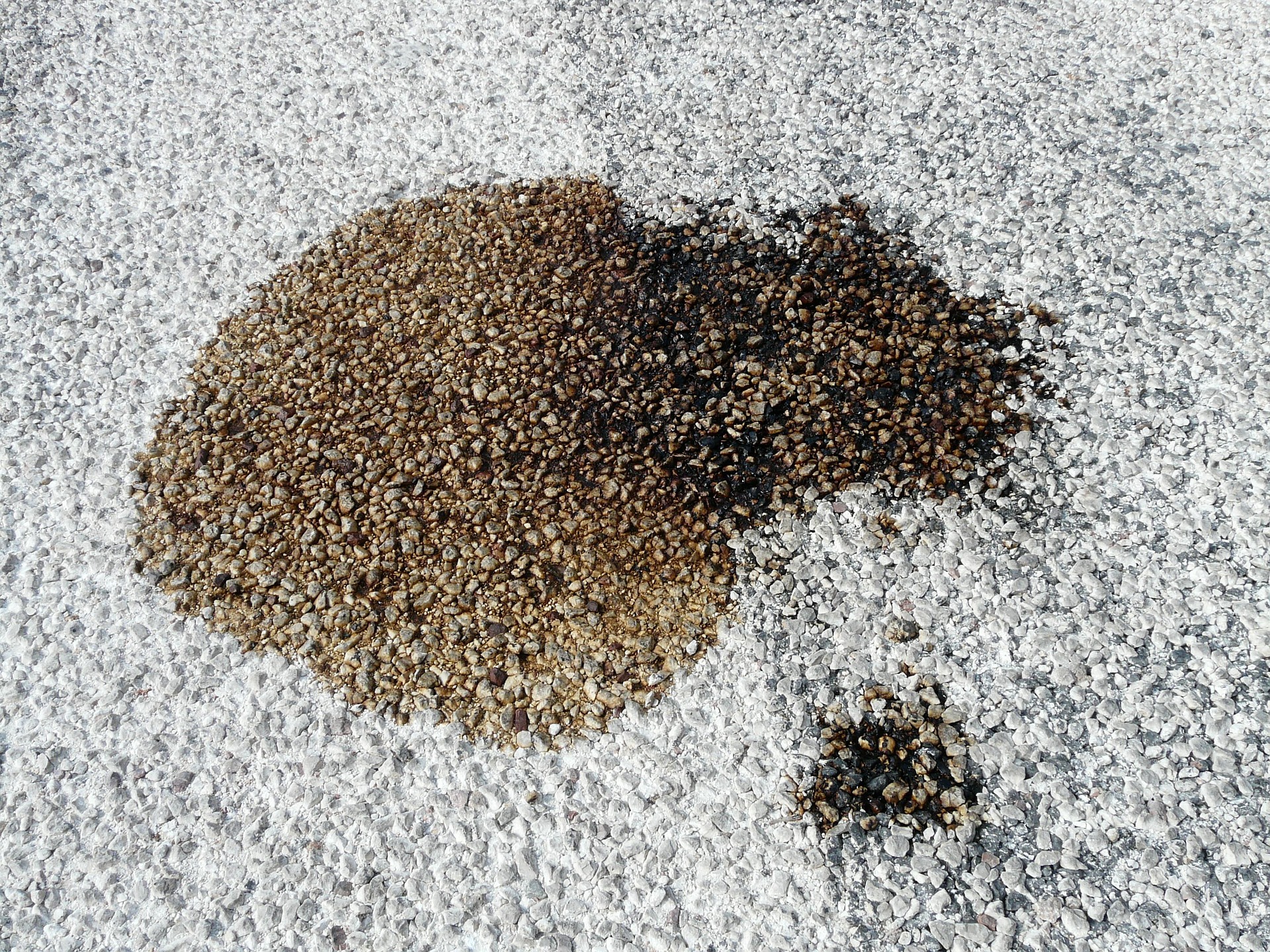
Most garage oil spills start with clutter. A crowded shelf topples a bottle of two-cycle mix; a jack left in the middle of the bay drips hydraulic fluid. By pairing stain-removal know-how with the storage solutions in Renuity’s garages line, including wall panels, overhead racks, and sealed cabinets, you attack both the spill and its source.
This guide explains how to get oil stains out of concrete, dispose of oily waste responsibly, and protect the slab with a high-performance polyurea coating so the mess never comes back.
Unsealed concrete is a maze of pores. Motor oil seeps in, mixes with road dust, and hardens into a dark patch that resists casual scrubbing. Older slabs soak up even more because weathering widens the surface network. Understanding this chemistry is key to how to remove oil stains from concrete. The right cleaner has to break the bond, and not just mask it.
A wet spot is the easiest fix. Cover it with kitty litter or sawdust, press lightly, and sweep the absorbent into a sealed bag. Next, scrub with warm soapy water and a stiff nylon brush. Rinse. This quick routine illustrates how to get oil stains off concrete before they set. Finally, slide a drip pan or storage tray under the culprit tool; the tray slots neatly on a wall shelf and keeps the floor clear.
Baking-soda paste (three parts powder to one part water) draws out shallow discoloration overnight. Cola works on coin-sized dots, thanks to its phosphoric acid content. These household hacks cost pennies and often succeed on lighter marks that appear after a DIY oil change.
Set-in patches need a water-based, biodegradable degreaser. Apply, wait fifteen minutes, scrub, and rinse. Test first: aggressive cleaners can lighten weather-worn slabs. When heavy equipment leaks repeatedly, consider reorganizing the bay; stow tools on a slatted wall panel and roll the mower onto a drip mat. A good layout is a silent partner in how to get oil stains out of concrete and keep them out.
Mix powdered clay or Portland cement with a citrus degreaser until it forms a thick batter. Spread one inch deep, cover with plastic, tape, and wait a day. When the crust lifts, most of the stain comes with it. Sometimes, a second round finishes the job and finally removes oil stains from concrete that have lingered for years.
Oily rags, absorbent granules, and used poultice must never reach storm drains! Double-bag debris, label it “oil-contaminated,” and take it to a household hazardous-waste center. Empty containers should air-dry, then go in regular trash if local ordinances allow. This simple discipline meets best practice on how to dispose of grease and protects groundwater.
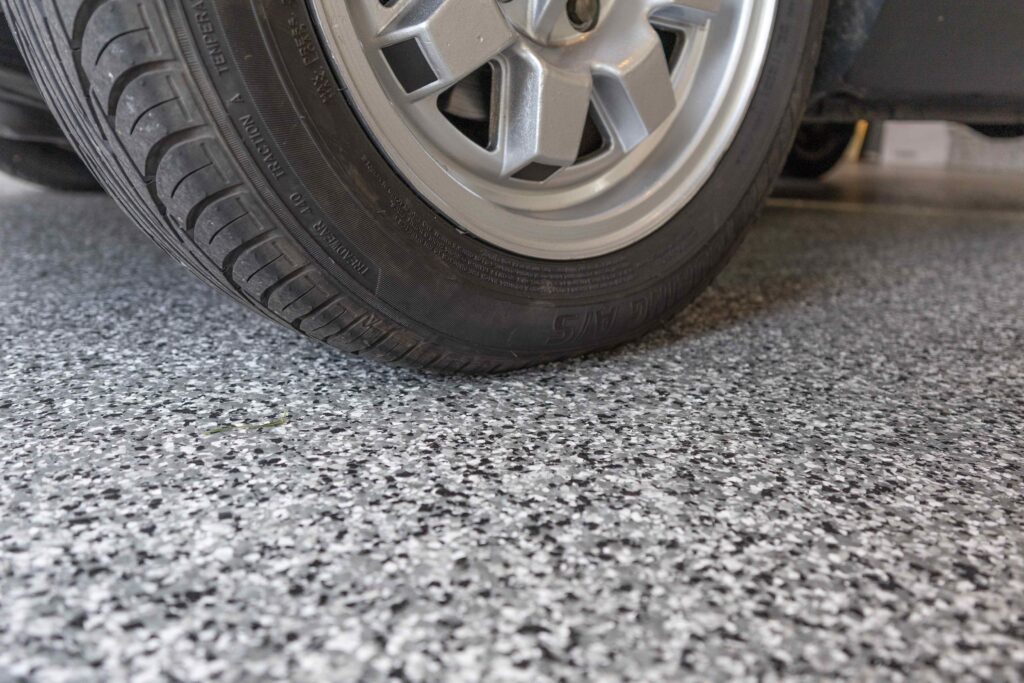
Once the surface is clean, protect it. Polyurea topcoats bond deeper than epoxy, cure faster, and resist hot-tire pickup—advantages detailed in the comparison of garage floor coating types. They also shrug off brake fluid and diesel spills, meaning future wipe-ups take seconds. See why many owners move past epoxy in favor of our proprietary polyurea formula, making it a favorable alternative to epoxy garage floors.
A bright, flake-speckled finish rewards the cleanup effort and sets the stage for the cabinetry and ceiling racks that come standard in many Renuity storage packages.
Rehabbed floors deserve an organized layout. The solutions catalogued in our garage storage lineup tackle oil at its source—leaky cans, loose filters, loose funnels—by giving each item a sealed or elevated resting spot.
Smart containment ideas
With gear off the ground, new coatings stay pristine and every maintenance step—like those in the guide to how to clean a garage floor—takes less than ten minutes.

Knowing how to get oil stains out of concrete is a useful skill, but designing a garage that resists spills is even smarter. Start with fast first-aid, escalate to degreaser or poultice for older marks, and finish with a durable polyurea coating. Layer in wall-mounted storage, overhead shelves, and lockable cabinets so tools and fluids stay in their lanes.
With Renuity’s durable floor coatings and smart storage solutions, your garage goes back to being a place for parking, projects, and easy clean-ups—not endless scrubbing. Ready for an upgrade? Schedule a free in-home consultation through our online form, and let Renuity design a cleaner, better-organized garage that stays stain-free for good.
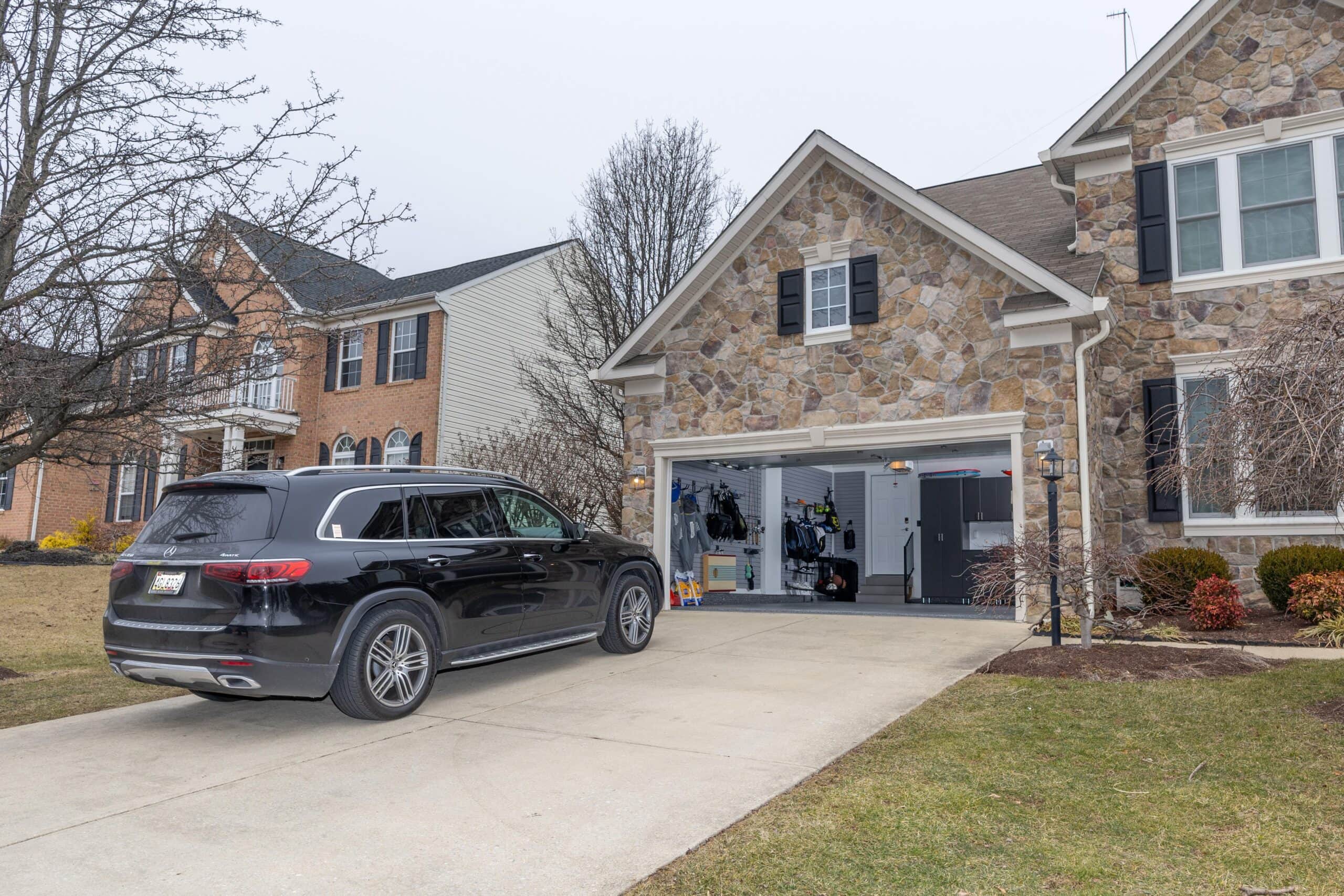
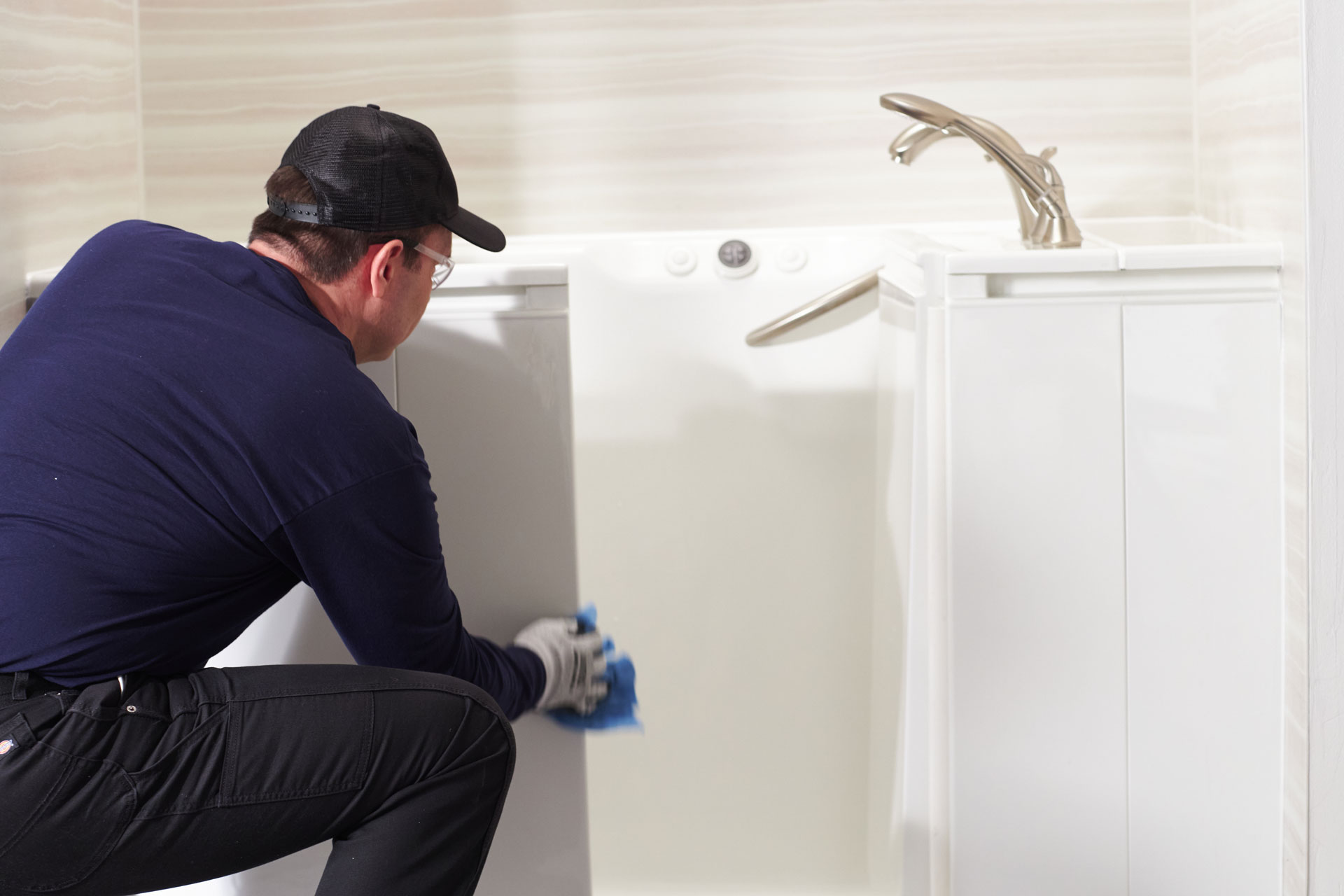

Renuity is backed by top industry ratings and trusted by homeowners nationwide for quality, service, and reliability.




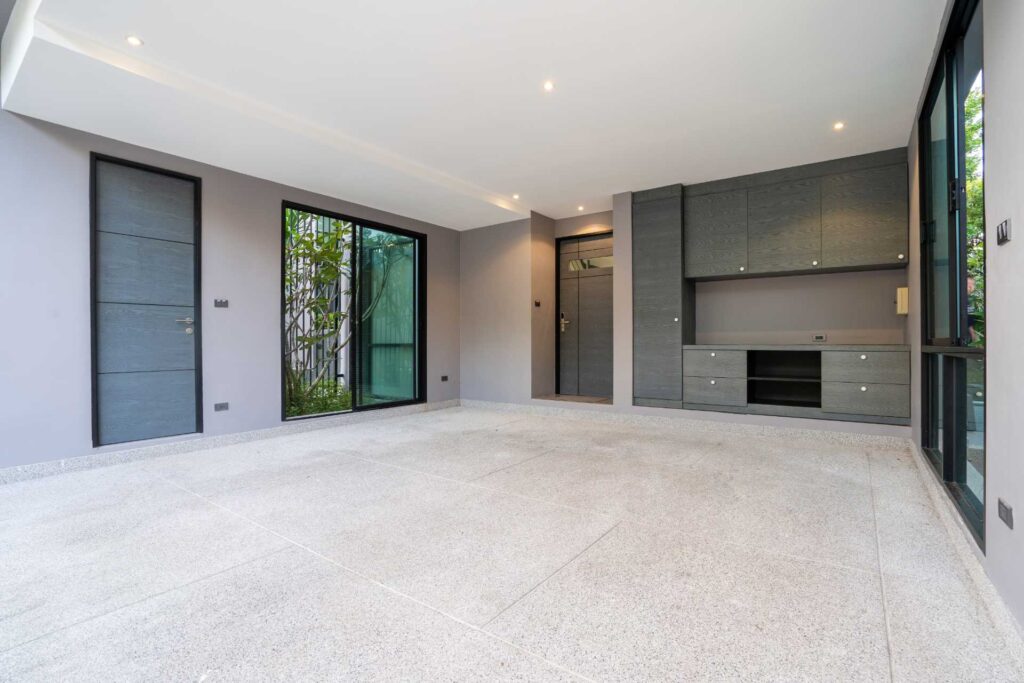
plus 12 months, no interest, no or low monthly payments
Claim Offer